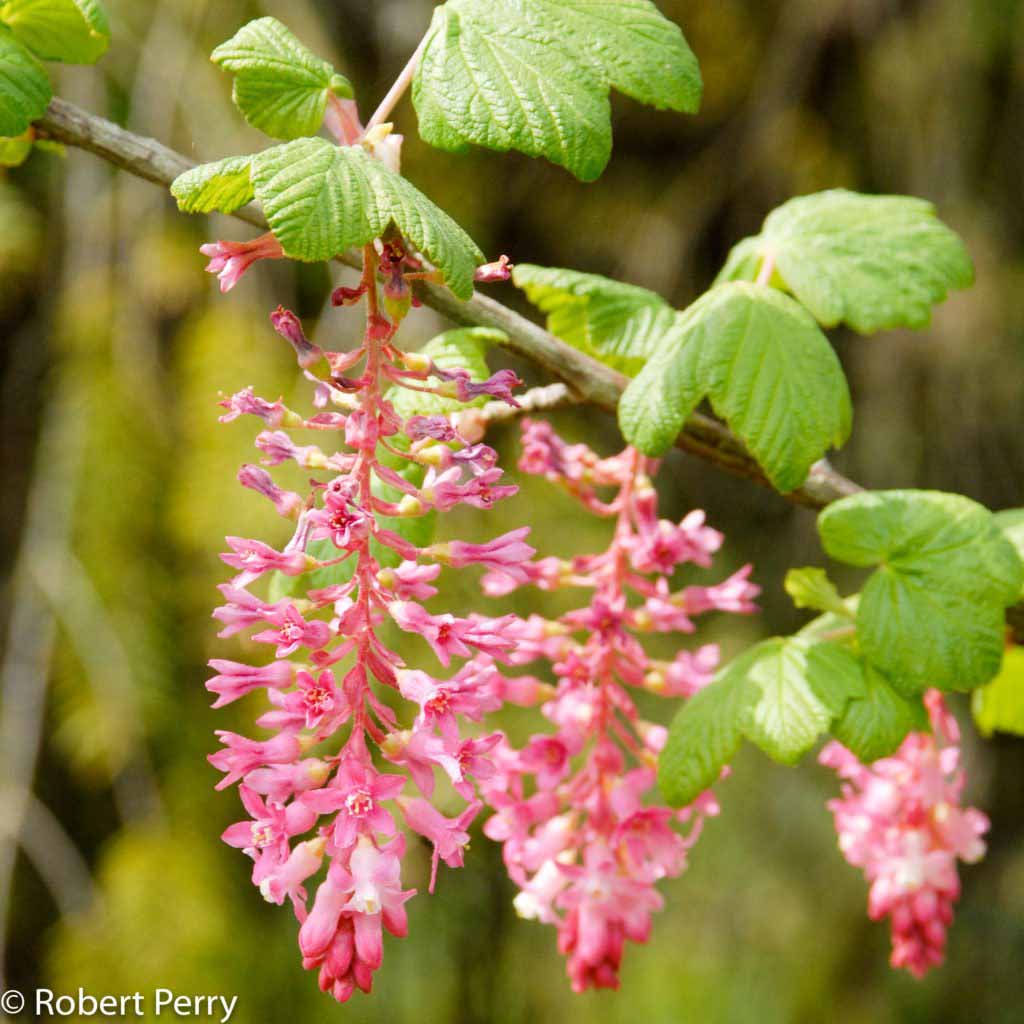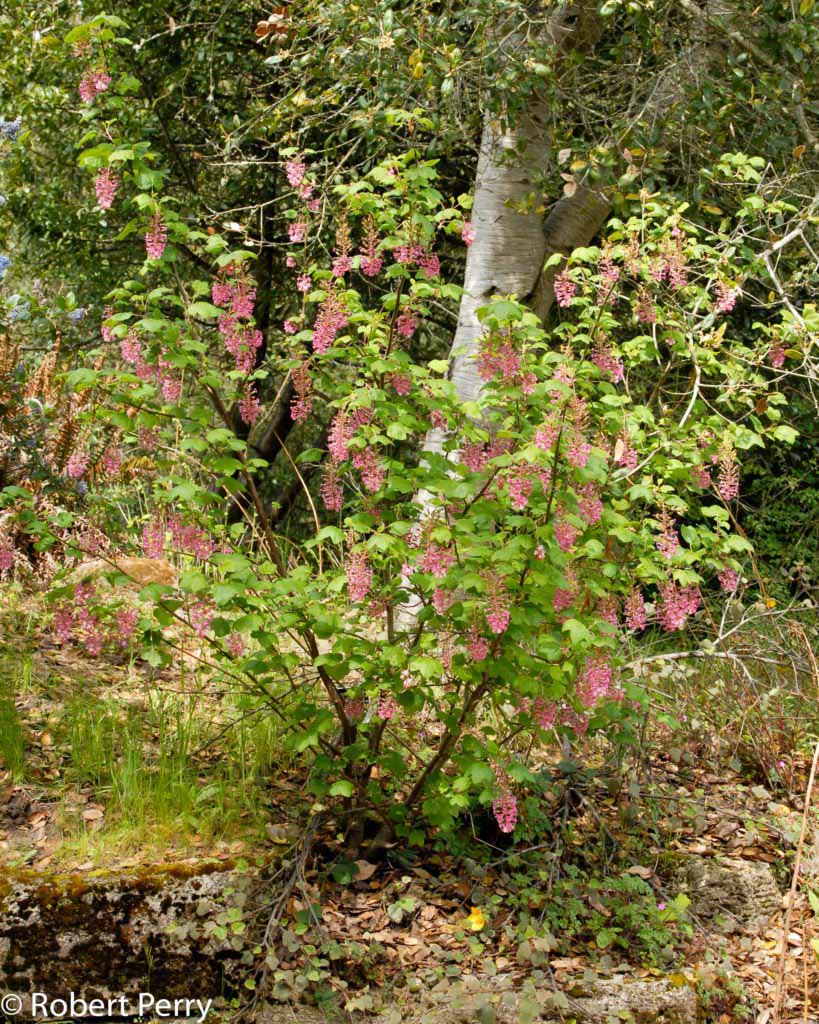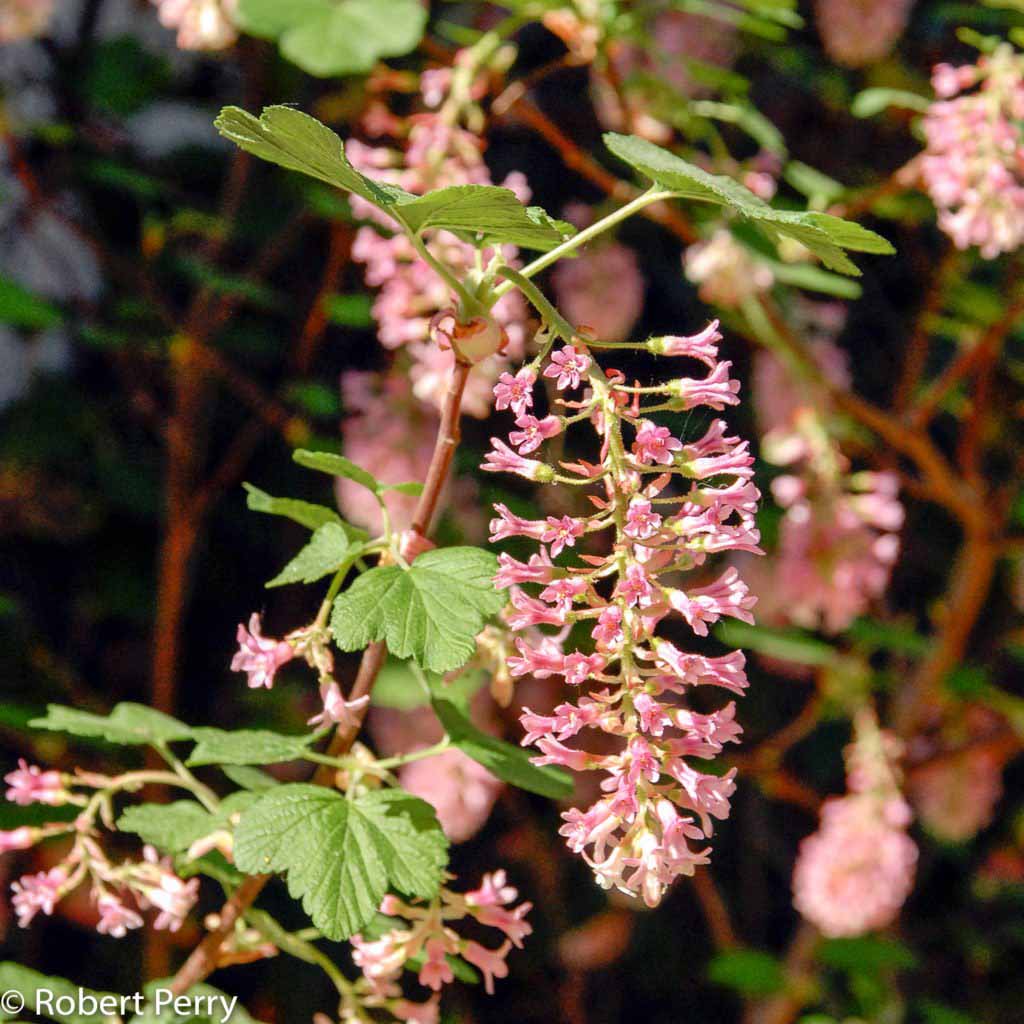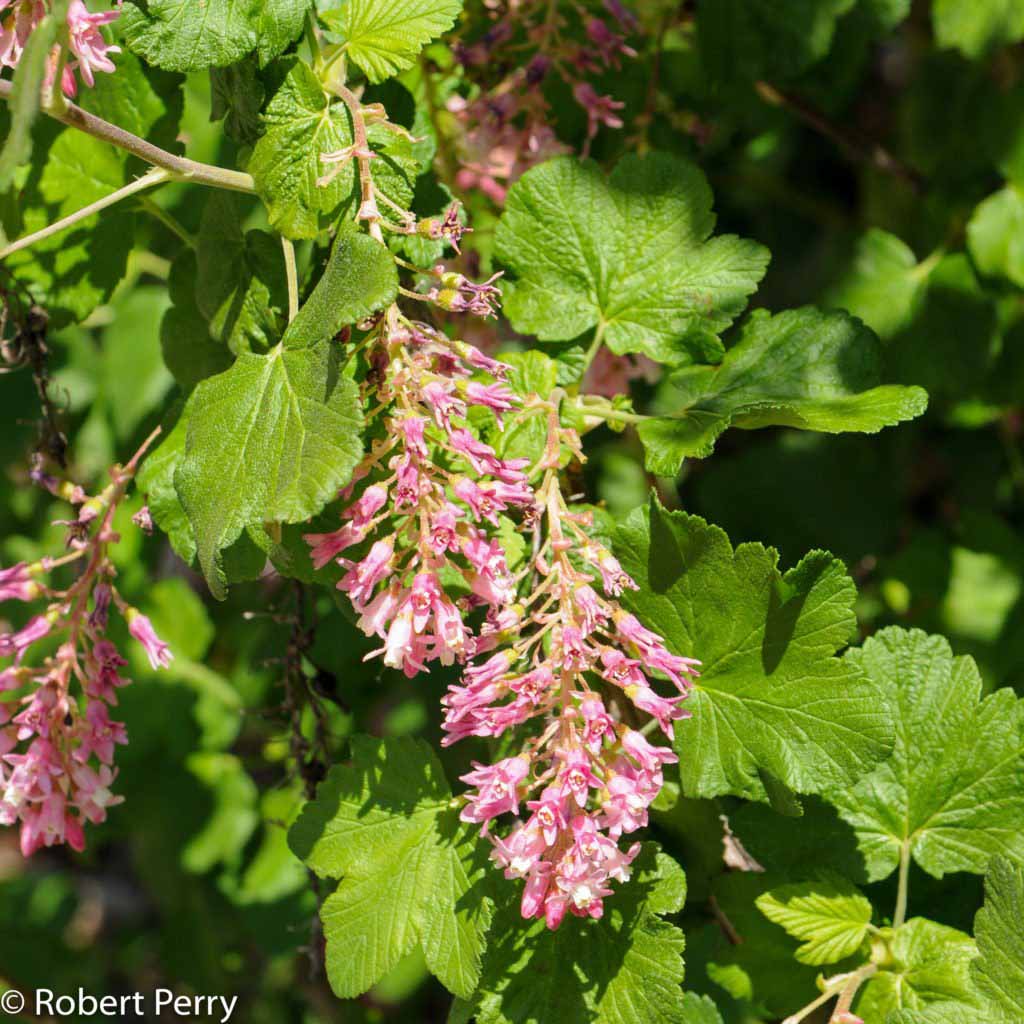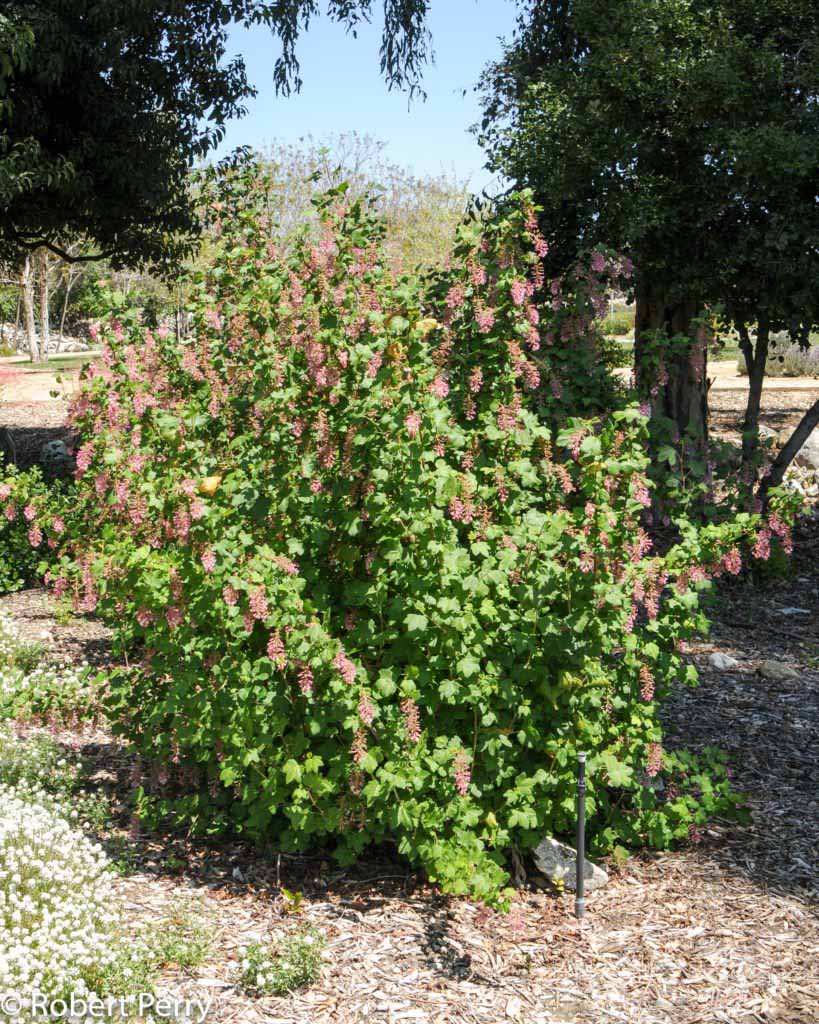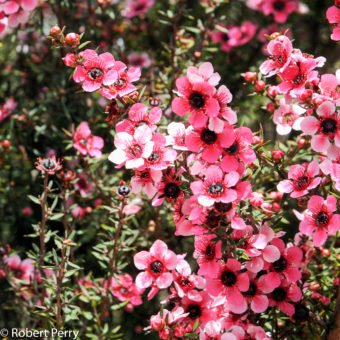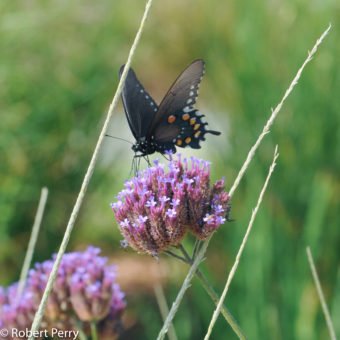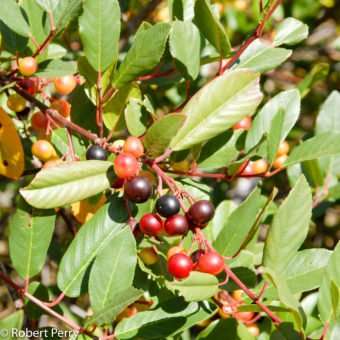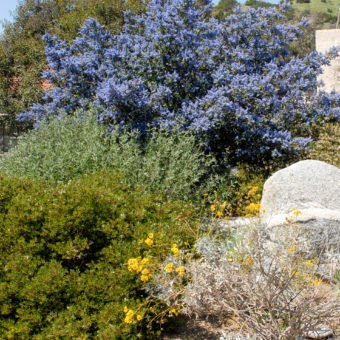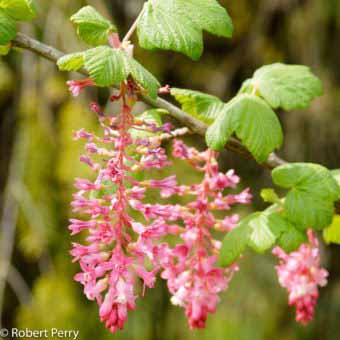The Pink flowering currant is a deciduous shrub growing with an upright branching habit, 6-12 ft. tall, 5-6 ft. wide. Medium green leaves have a wrinkled surface marked by many veins and have heavily lobed margins. Large pendulous pink and white flowers grow in 4-6 in. long pendulous clusters in early spring.
Pink flowering currant is best adapted to Inland Empire gardens in areas of partial shade, rich soils and with regular moisture. Both the color and cascading character of its flowers make it a delightful accent plant on slopes and as a backdrop to smaller plants. It is often planted with other California natives on the Western Sycamore Palette to help achieve a woodland garden character.
